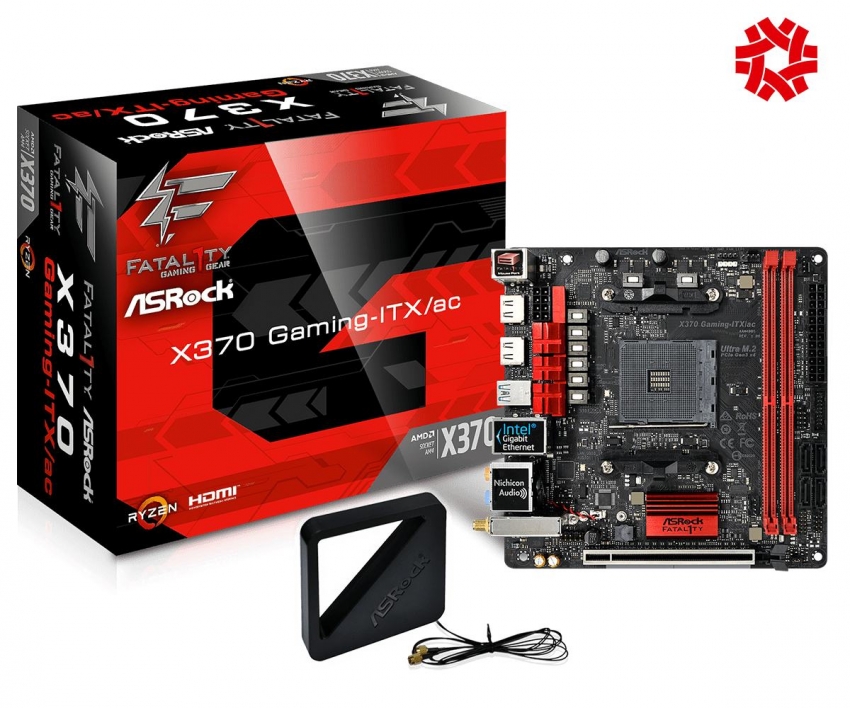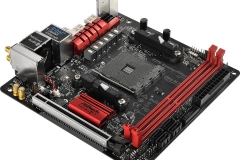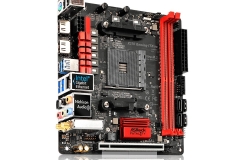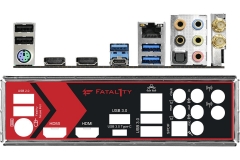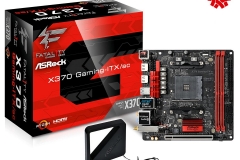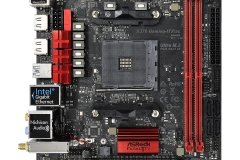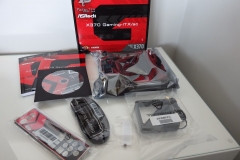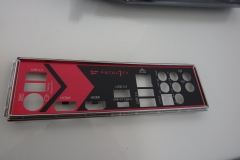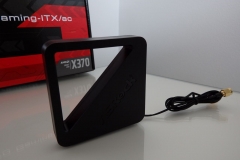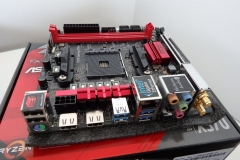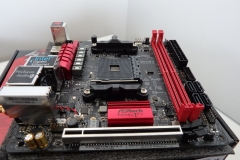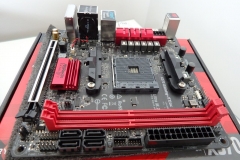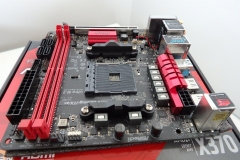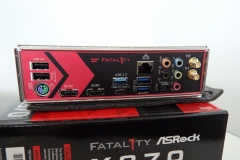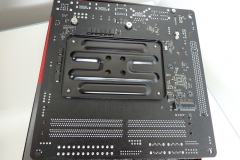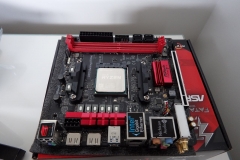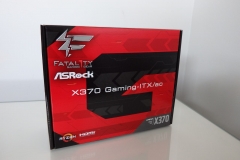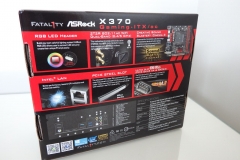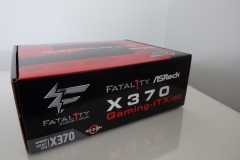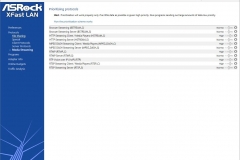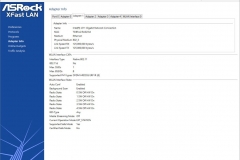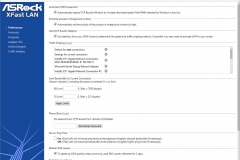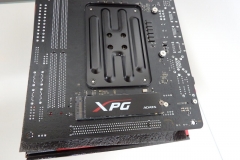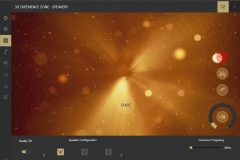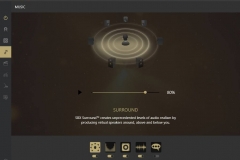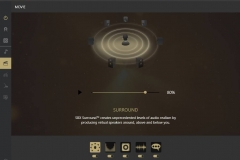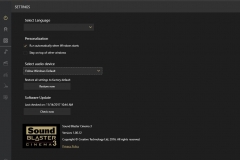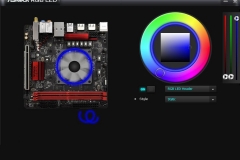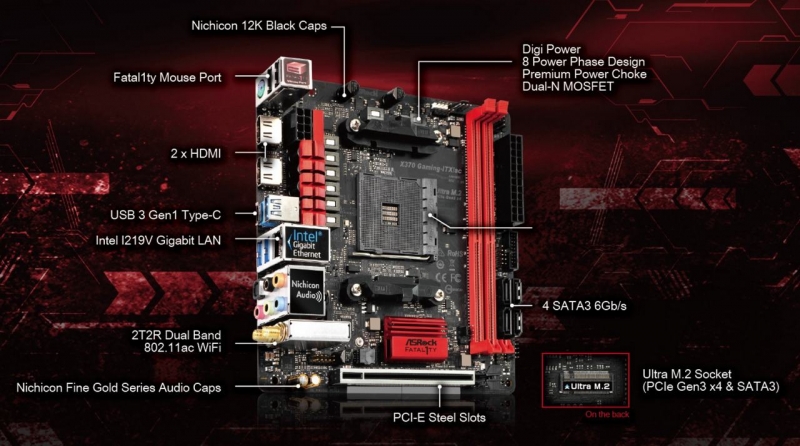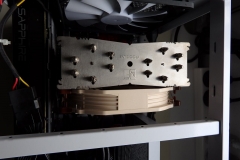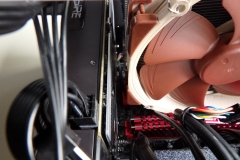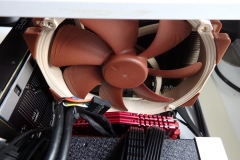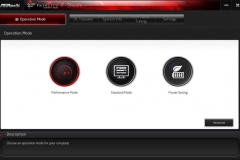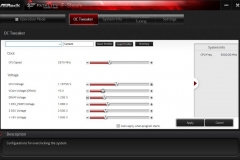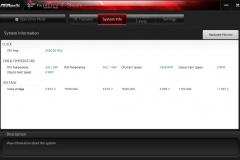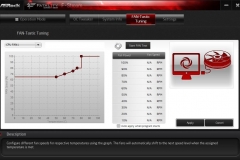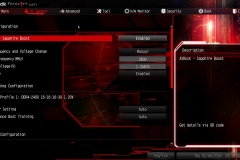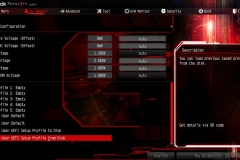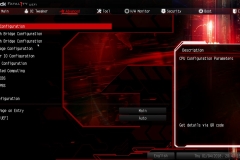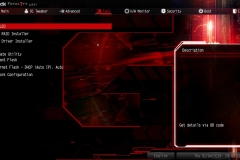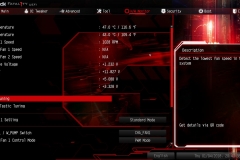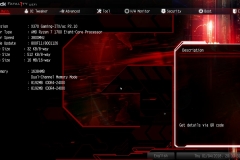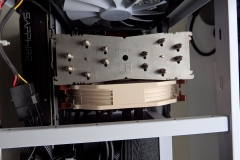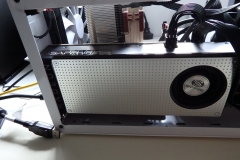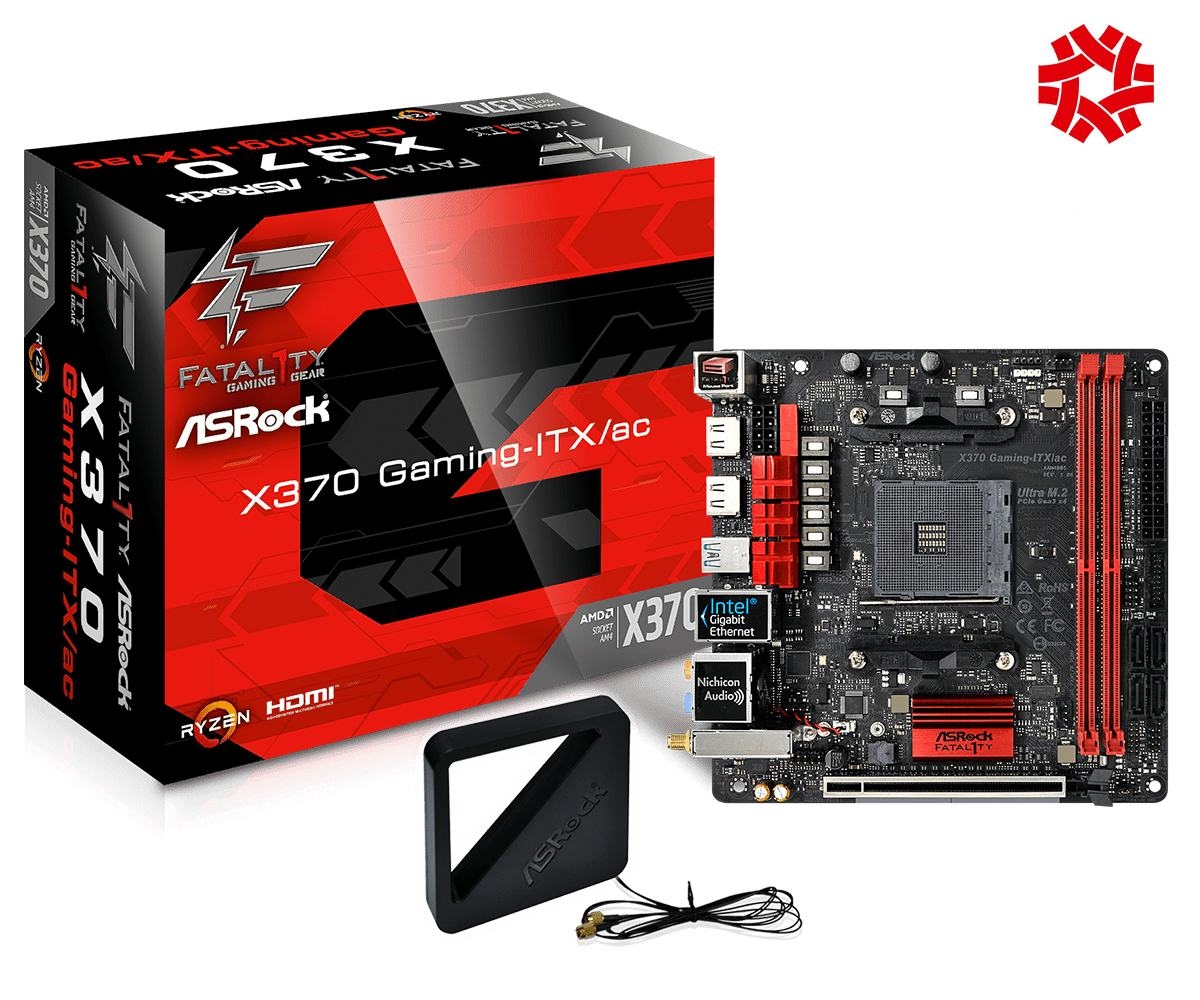AMD really made 2017 count with their release of RYZEN CPUs, the AM4 socket and the X370 and B350 chipsets. On release, the AM4 socket motherboard options for the ATX and MATX form factors were extensive and consumers were spoiled for choice but there was still a void left in the ITX sector for people like myself who appreciate and seek to build smaller yet still very powerful PCs for gaming.
After looking at the AMD AM4 Chipset roadmap, I thought the X300 chipset would be adequate for a SFF AMD gaming rig but the more extensive X370 chipset on an ITX motherboard is nice overkill for an enthusiast and it’s arrived.
ASRock has built a solid, feature-packed X370 gaming motherboard in the ITX form factor with the Fatal1ty X370 Gaming ITX/ac. This board has everything a gamer needs and we have run it through its paces for 2 months in the lab. This testing included the standard tests on the open air test bench, in an ATX case with a stock standard Wraith Max cooler and then in a small form factor concept build that we are using as our primary VR test bench.
The ASRock Fatal1ty X370 Gaming ITX/ac is a strong offering and the motherboard met our needs to the point where we look forward to using it in an ongoing capacity for our portable Oculus Rift VR setup.
Key Features
I’ll go through the features in more detail shortly but in summary, ASRock consider the key features of this motherboard as follows:
- Supports AMD Socket AM4 A-Series APUs (Bristol Ridge) and Ryzen Series CPUs (Summit Ridge)
- Supports DDR4 3466+ (OC) (Ryzen CPU) / 2400 (A-series APU)
- Intel® Gigabit LAN
- 1 PCIe 3.0 x16
- Graphics Output: 2 HDMI
- 4 SATA3, 1 Ultra M.2 (PCIe Gen3 x4)
- 6 USB 3.1 Gen1 (1 Type-C, 2 Front, 3 Rear)
- ASRock Super Alloy
- 7.1 CH HD Audio (Realtek ALC1220 Audio Codec), Supports Creative Sound Blaster™ Cinema 3
- Intel® 802.11ac+ BT 4.2
This is a gaming motherboard and it’s unlikely that a hardcore gamer will be using an A-Series APU in the Fatal1ty X370 Gaming ITX/ac. That said, for a media/home theatre PC that will be used for some couch gaming and basic titles at 1080p, the HDMI connectivity will be appreciated by less demanding users. A second HDMI output may also be handy for dual screen desktop use.
When unboxing the board, everything looked exactly as expected and in-line with the promotional shots. The board was well packed in the retail box and arrived undamaged. The gallery below shows the Fatal1ty X370 Gaming ITX/ac in more detail from all angles so you can get a better appreciation for the practical layout.
LAN
The Intel Gigabit LAN is well implemented and we saw transfer speed in-line with other motherboards that use the same solution. The XFAST web-based utility initially felt odd, being web-based and accessed via a browser instead of a standard local executable but the functionality is there and seems to work well.
Our transfer speeds were consistent and we used LAN_SpeedTest to validate transfers from the SSD on the ASRock X370 Gaming ITX/ac to an SSD on our Z77-based workstation as used in all other network testing. The cabling is all CAT6 running from the wall point to a patch panel and a Gigabit switch.
The results from the wired testing were:
- Write Speed = 729.60 Mbps
- Read Speed = 912.11 Mbps
Wi-Fi
The Wireless is dual-band with both 2.4 and 5GHz Wi-Fi bands implemented via the Intel 802.11ac solution that also provides Bluetooth 4.2. There are two antennas to support 2(Transmit) x2(Receive) diversity technology.
Wireless testing was conducted through 3 stud walls (no internal insulation).
At 5GHz we saw transfer speeds of:
- Write Speed = 235.36 Mbps
- Read Speed = 397.61 Mbps
This was fine for general purposes and gaming via Wi-Fi was problem-free. When tested in a different environment with an internal brick/masonry wall between the Wi-Fi Access Point and the test setup, the included antenna seemed to be less effective at making and holding a connection than the antenna packaged with the X399 Taichi or even the Gigabyte antenna from the Z170N Gaming 5 ITX board. The Wi-Fi isn’t bad by any means, but the antenna wasn’t quite as good as we were expecting it to be in a challenging environment. In a house with typical stud walls and reasonable proximity to the access point, the Wi-Fi capability should be fine as per our standard testing above. This observation isn’t a deal breaker but rather something to be aware of if you are looking at this board and already have known issues with Wi-Fi connectivity in your house.
SATA
The SATA3 connectivity should be more than adequate for most ITX implementations as 4 SATA devices is about the limit of most ITX cases. The M.2 PCIe Gen3 x4 slot means that you can have up to 5 storage devices attached. In our testing we used an ADATA XPG SX8000 M.2 SSD as the boot drive and a 640GB 7200RPM 2.5″ HDD for storing the bulk of our games. This left room for a larger slower storage drive, another SATA SSD and an optical drive if we wanted to expand.
USB Connectivity
USB connectivity is an interesting point. There are two internal USB headers, a USB 2.0 and a USB 3.1 Gen 1 – both with ESD protection which is important as we have seen a motherboard damaged in the past by ESD via a front USB port on a case.
The rear USB connectivity is :
- 2 x USB 2.0 Ports (Supports ESD Protection)
- 1 x USB 3.1 Gen1 Type-A Port (Supports ESD Protection)
- 1 x USB 3.1 Gen1 Type-C Port (Supports ESD Protection)
- 2 x USB 3.1 Gen1 Ports (Supports ESD Protection)
This makes 4 USB 3.1 ports and 2 USB 2.0 ports in total with one of those being a USB Type-C. I’d consider this the minimum for a gaming board. Given that this motherboard is a Gaming/enthusiast product on an X370 platform, it would have been nice to see the HDMI ports stacked to make room for another 2-4 USB 3.1 ports.
Why would you want more than 6 rear USB ports on an ITX system? Let’s look at how those ports could be used:
- USB 2.0 (1): Keyboard
- USB 2.0 (2): Mouse
- USB 3.1 (Type-C): USB storage device
- USB 3.1 (Type-A): Oculus VR headset
- USB 3.1 (3): Oculus VR sensor #1
- USB 3.1 (4): Oculus VR sensor #2
This is the point where we start running out of ports and need to look at a hub or use the front I/O ports. Even if you don’t use VR, those 3 ports won’t take long to occupy with phone chargers or peripherals.
The number of USB ports available is not a deal breaker and we are seeing USB 3 hubs in some gaming monitors and keyboards which will reduce the dependency on the number of rear USB connections. I just saw the rear IO layout as a missed opportunity for perhaps 2 more USB 3.1 ports.
Gaming Audio
ASRock implemented the Realtek ALC1220 Audio codec on the Fatal1ty X370 Gaming ITX/ac with Creative Sound Blaster Cinema 3 software support. We’ve seen this combination used on many boards recently and it works well for a well-balanced immersive audio experience. During our testing, we didn’t have any issues at all with the audio performance and found games like Battlefield 1, Star Wars Battlefront 2, BioShock Infinite, CS:GO, Elder Scrolls Online, Black Ops 2 & 3 to be great. Movies and music were also well balanced, clear and the sound seemed to be consistent with other boards sporting the same solution. We tested the audio using HyperX Cloud and Cloud Revolver headsets along with Logitech Z533 speakers which are not audiophile quality by any means but for a typical gaming setup they are similar to what most people are likely to be using. Personally, I’d be more than happy with the audio built into this board for gaming and entertainment.
Durabiltiy / Build Quality
There is some not-so subtle marketing about the components and the effort that ASRock designers invested in build quality. The board doesn’t look fragile, the heat sinks are well attached, all the solder points and slots are solid. I couldn’t find anything that looked or felt ‘cheap’ on this motherboard. The ASRock X399 Taichi also had solid build quality and hasn’t missed a beat since we installed our Threadripper into it.
The key durability features that ASRock implemented into the Fatal1ty X370 Gaming ITX/ac are:
- PCI Steel slot that protects the PCIe x16 slot from damage during transit, installation and at least gives the board a fighting chance should you drop your rig or knock it over.
- ESD protection on the USB and Ethernet ports
- High Density Power Connectors
- 15μ Gold Contact on the DDR4 slots and PCIe x16 slot
- Gold Audio Jacks
- “Super Alloy” Feature set that includes
- 2oz Copper PCB
- Premium Power Chokes to provide improved Vcore voltage regulation
- Dual-N MOSFET where each die area is larger to improve the efficiency of the power supply to the CPU
- Nichicon 12K Black Capacitors that have rated lifespans of over 12,000 hours.
- High Density Glass Fabric PCB with reduced gaps between PCB layers (compared to previous technology) which should improve durability against electrical shorts caused by humidity.
- Matte Black PCB which is more of an aesthetic feature than a practical one but it sure does look good.
Aesthetics
Typically, ITX boards don’t get seen very often as only a small proportion of ITX cases have windows and even then, the CPU coolers and graphics cards obscure the board. For this reason, I don’t place a lot of value on the aesthetics of ITX motherboards but having said that, I’m more likely to buy a better looking board if all other factors are considered equal.
There is nothing ugly about this board, it’s very neat and there is a clear but not garish black theme with red highlights on the heat sinks and RAM slots. ASRock also included an AMD compatible RGB header for the AMD (or after-market) CPU fans. The software is easy to use and we didn’t have any issues when using this with an AMD Wraith MAX RGB cooler in our testing.
Layout
This motherboard is well laid-out and the designers clearly thought about how a person would build with it and use it. The layout is compatible with both water coolers and larger air coolers, it’s also highly compatible with compact ITX cases due to the SATA and USB header orientation. The only real place for an M.2 SSD is on the underside of the board – which is exactly where you will find it here.
The 8-pin CPU power has been moved in a bit from the top edge of the board in a move that I initially thought was odd until I installed the Fatal1ty X370 Gaming ITX/ac into a case. In larger cases, this isn’t such a big thing but I can see how it makes sense with that little bit of extra wiggle room for cramped cases.
The space above the 1st HDMI port means that you can easily get your finger onto the CPU power lead release latch. This is something I didn’t appreciate on the open air test bench and only noticed when installing it into the In Win 303 and the Node 304 cases.
Let’s look at the CMOS CLR jumper – there is no ‘good’ place for one of these on an ITX board and whilst you do have to remove the graphics card to get to it, chances are that this is the easiest part of the board to access once it’s in a rig. There is usually adequate wiggle room and less cables around the graphics card due to lack of other headers/cables and generally builders try to keep the space around their GPU cooler as clear as possible for better airflow. ASRock were never going to keep everyone happy with the placement of the CMOS CLR jumper but I think they got it right in the absence of a rear I/O clear CMOS button.
It was pleasing to see logical orientation of the SATA connections and USB headers in that they come straight up from the board and don’t go off to the side. In cramped cases, SATA headers that come off the board at 90 degrees can be unusable in cases like the Fractal Design ITX series of Node 202, 304 or Core 500 where the PSU is up against the edge of the motherboard. The ASRock orientation of USB and SATA headers is practical and the safest choice.
Having been accustomed to seeing only 2 fan headers (1xCPU, 1xSystem Fan) on ITX motherboards, seeing 3 on the ASRock Fatal1ty X370 Gaming ITX/ac is good design and gives builds even more control over the airflow in their ITX case.
Clear areas around the socket and the corner mounting screws for easy installation should also be noted as this isn’t something we see on all boards.
The socket placement means that you can use a large cooler like the Noctua NH-U14S to cool an overclock without fouling the PCIe slot. We used the large heat sink in our Node 304 ITX case for a quiet but powerful overclocked Ryzen 1700 build without any issues at all. This is one of my personal preferred configurations as the build is very subtle in a loungeroom or on a desk without compromising performance.
Specifications
| CPU | - Supports AMD Socket AM4 A-Series APUs (Bristol Ridge) and Ryzen Series CPUs (Summit Ridge) - Digi Power design - 8 Power Phase design - Supports 95W Water Cooling |
| Chipset | - AMD Promontory X370 |
| Memory | - Dual Channel DDR4 Memory Technology - 2 x DDR4 DIMM Slots - AMD Ryzen series CPUs support DDR4 3466+(OC) / 3200(OC) / 2933(OC) / 2667 / 2400 / 2133 ECC & non-ECC, un-buffered memory* - AMD 7th Gen A-Series APUs support DDR4 2400/2133 ECC & non-ECC, un-buffered memory** - Max. capacity of system memory: 32GB** - 15μ Gold Contact in DIMM Slots **Due to the operating system limitation, the actual memory size may be less than 4GB for the reservation for system usage under Windows® 32-bit OS. For Windows® 64-bit OS with 64-bit CPU, there is no such limitation. Please refer to Memory Support List on ASRock's website for more information. |
| BIOS | - 128Mb AMI UEFI Legal BIOS with GUI support - Supports "Plug and Play" - ACPI 5.1 compliance wake up events - Supports jumperfree - SMBIOS 2.3 support - CPU, DRAM, PCH 1.05V, PROM 2.5V, Voltage Multi-adjustment |
| Graphics | - Integrated AMD Radeon™ R-Series Graphics in A-series APU* - DirectX 12, Pixel Shader 5.0 - Max. shared memory 2GB - Supports 2 x HDMI with max. resolution up to 4K x 2K (4096x2160) @ 24Hz / (3840x2160) @ 30Hz - Supports Auto Lip Sync, Deep Color (12bpc), xvYCC and HBR (High Bit Rate Audio) with HDMI Ports (Compliant HDMI monitor is required) - Supports HDCP with HDMI Ports - Supports Full HD 1080p Blu-ray (BD) playback with HDMI Ports *Actual support may vary by CPU |
| Audio | - 7.1 CH HD Audio with Content Protection (Realtek ALC1220 Audio Codec) - Premium Blu-ray Audio support - Supports Surge Protection - Nichicon Fine Gold Series Audio Caps - 120dB SNR DAC with Differential Amplifier - Pure Power-In - Direct Drive Technology - PCB Isolate Shielding - Impedance Sensing on Line Out port - Individual PCB Layers for R/L Audio Channel - Gold Audio Jacks - Supports Creative Sound Blaster™ Cinema 3 |
| LAN | - Gigabit LAN 10/100/1000 Mb/s - GigaLAN Intel® I211AT - Supports Wake-On-LAN - Supports Lightning/ESD Protection - Supports Energy Efficient Ethernet 802.3az - Supports PXE |
| Wireless LAN | - Intel® 802.11ac WiFi Module (Free Bundle) - Supports IEEE 802.11a/b/g/n/ac - Supports Dual-Band (2.4/5 GHz) - Supports high speed wireless connections up to 867Mbps - 2 antennas to support 2 (Transmit) x 2 (Receive) diversity technology - Supports Bluetooth 4.2 / 3.0 + High speed class II |
| Slots | AMD Ryzen series CPUs - 1 x PCI Express 3.0 x16 Slot (PCIE1: x16 mode)* AMD 7th A-Series APUs - 1 x PCI Express 3.0 x16 Slot (PCIE1: x8 mode)* - 1 x Vertical M.2 Socket (Key E) with the bundled WiFi-802.11ac module (on the rear I/O) - 15μ Gold Contact in VGA PCIe Slot (PCIE1) *Supports PCIe riser cards to extend one x16 slot to two x8 slots if you install AMD Ryzen series CPUs Supports NVMe SSD as boot disks |
| Storage | - 4 x SATA3 6.0 Gb/s Connectors, support RAID (RAID 0, RAID 1 and RAID 10), NCQ, AHCI and Hot Plug - 1 x Ultra M.2 Socket, supports M Key type 2280 M.2 SATA3 6.0 Gb/s module and M.2 PCI Express module up to Gen3 x4 (32 Gb/s) (with Ryzen Series CPU) or Gen3 x2 (16 Gb/s) (with A-Series APU)* *Supports NVMe SSD as boot disks |
| Connector | - 1 x LPC Header - 1 x AMD Fan LED Header* - 1 x CPU Fan Connector (4-pin)** - 1 x Chassis Fan Connector (4-pin) - 1 x Chassis Optional/Water Pump Fan Connector (4-pin) (Smart Fan Speed Control)*** - 1 x 24 pin ATX Power Connector - 1 x 8 pin 12V Power Connector (Hi-Density Power Connector) - 1 x Front Panel Audio Connector - 1 x AMD LED Fan USB Header - 1 x USB 2.0 Header (Supports 2 USB 2.0 ports) (Supports ESD Protection) - 1 x USB 3.1 Gen1 Header (Supports 2 USB 3.1 Gen1 ports) (Supports ESD Protection) *The AMD Fan LED Connector supports LED strip of maximum 3A (36W) and LED strip length up to 2.5M. **The CPU Fan Connector supports the CPU fan of maximum 1A (12W) fan power. ***The Chassis Optional/Water Pump Fan supports the water cooler fan of maximum 1.5A (18W) fan power. CHA_FAN1/W_PUMP can auto detect if 3-pin or 4-pin fan is in use. |
| Rear Panel I/O | - 2 x Antenna Ports - 1 x PS/2 Mouse/Keyboard Port - 2 x HDMI Ports - 1 x Optical SPDIF Out Port - 2 x USB 2.0 Ports (Supports ESD Protection)* - 1 x USB 3.1 Gen1 Type-A Port (Supports ESD Protection) - 1 x USB 3.1 Gen1 Type-C Port (Supports ESD Protection) - 2 x USB 3.1 Gen1 Ports (Supports ESD Protection) - 1 x RJ-45 LAN Port with LED (ACT/LINK LED and SPEED LED) - HD Audio Jacks: Rear Speaker / Central / Bass / Line in / Front Speaker / Microphone (Gold Audio Jacks) *1 x Fatal1ty Mouse Port (USB 2.0) is included |
| Gaming Armor | Power - Hi-Density Power Connector (8 pin) Memory - 15μ Gold Contact in DIMM Slots VGA Card - 15μ Gold Contact in VGA PCIe Slot (PCIE1) Internet - Intel® LAN Cooling - 2oz Copper PCB Audio - Creative Sound Blaster™ Cinema 3 |
| Unique Feature | ASRock Super Alloy - Premium Power Choke - Dual-N MOSFET - Nichicon 12K Black Caps (100% Japan made high quality conductive polymer capacitors) - Matte Black PCB - High Density Glass Fabric PCB - 2oz Copper PCB Intel® 802.11ac WiFi ASRock Steel Slots ASRock Ultra M.2 (PCIe Gen3 x4 & SATA3) ASRock Full Spike Protection (for all USB, Audio, LAN Ports) ASRock Live Update & APP Shop |
| Software and UEFI | Software - ASRock F-Stream - ASRock RGB LED - ASRock Key Master - ASRock APP Charger - ASRock XFast LAN UEFI - ASRock Full HD UEFI - ASRock Instant Flash - ASRock Internet Flash - ASRock Easy RAID Installer *These utilities can be downloaded from ASRock Live Update & APP Shop. |
| Support CD | - Drivers, Utilities, AntiVirus Software (Trial Version), Google Chrome Browser and Toolbar |
| Accessories | - Quick Installation Guide, Support CD, I/O Shield - 2 x SATA Data Cables - 1 x ASRock WiFi 2.4/5 GHz Antenna - 1 x Screw for M.2 Socket |
| Hardware Monitor | - Temperature Sensing: CPU, Chassis, Chassis Optional/Water Pump Fans - Fan Tachometer: CPU, Chassis, Chassis Optional/Water Pump Fans - Quiet Fan (Auto adjust chassis fan speed by CPU temperature): CPU, Chassis, Chassis Optional/Water Pump Fans - Fan Multi-Speed Control: CPU, Chassis, Chassis Optional/Water Pump Fans - Voltage monitoring: +12V, +5V, +3.3V, CPU Vcore |
| Form Factor | - Mini-ITX Form Factor: 6.7-in x 6.7-in, 17.0 cm x 17.0 cm - 2oz Copper PCB |
| OS | - Microsoft® Windows® 10 64-bit |
| Certifications | - FCC, CE - ErP/EuP ready (ErP/EuP ready power supply is required) |
The table below shows the differences between the AM4 chipsets and why X370 in ITX is a bit of a surprise. The full product page can be found on ASRock’s website.
| Chipset | PCI Express® Gen3 Graphics* | USB 3.1 G2 + 3.1 G1 + 2.0 | SATA + NVMe | SATA Express* (SATA & GPP PCIe G3*) | PCI Express® GP* | Over-clocking***2 | |
|---|---|---|---|---|---|---|---|
| Enthusiast | X370 | 1x16/2x8 (AMD Ryzen™) 1x8 (A-Series/AMD Athlon™) | 2+10+6 | 6 + x2 NVMe (or 4 SATA plus 1 x4 NVMe on AMD Ryzen™ Processor) | 2 | x8 Gen2 (plus x2 PCIe Gen3 when no x4 NVMe) | Unlocked*** |
| Performance | B350 | 1x16(AMD Ryzen™)1x8 (A-Series/AMD Athlon™) | 2+6+6 | 4 + x2 NVMe (or 2 SATA 1 x4 NVMe on AMD Ryzen™ Processor) | 1 | x6 Gen2 (plus x2 PCIe Gen3 when no x4 NVMe) | Unlocked*** |
| Mainstream | A320 | 1x16 (AMD Ryzen™) 1x8 (A-Series/AMD Athlon™) | 1+6+6 | 4 + x2 NVMe (or 2 SATA 1 x4 NVMe on AMD Ryzen™ Processor) | 1 | x4 Gen2 (plus x2 PCIe Gen3 when no x4 NVMe) | Locked |
| SFF | X300 | 1x16/2x8 (AMD Ryzen™) 1x8 (A-Series/AMD Athlon™) | 0+4+0 | 2 + x2 NVMe (or 1 x4 NVMe on AMD Ryzen™ Processor) | 0 | x4 Gen3 (plus x2 PCIe Gen3 when no x4 NVMe) | Unlocked*** |
| SFF | A300 | 1x16 (AMD Ryzen™) 1x8 (A-Series/AMD Athlon™) | 0+4+0 | 2 + x2 NVMe (or 1 x4 NVMe on AMD Ryzen™ Processor) | 0 | x4 Gen3 (plus x2 PCIe Gen3 when no x4 NVMe) | Locked |
*Each SATA Express port functions as either two SATA 3.0 ports or 2 PCI Express® Gen3 lanes. These 2 PCI Express lanes can be combined with 2 general purpose PCI Express to form a 4-lane PCI Express port.
**SATA RAID through optimized driver. Does not include RAID for NVM Express.
***Performance thermal solution required for overclocking.
Software
It’s relatively basic compared to alternate vendors and it does its job. The tuning software is fine and the utility to restart into UEFI is also handy to have.
UEFI BIOS
The BIOS is pretty easy to navigate and suitable for modest overclocking/tuning. In the end, we were able to achieve a stable 3.9GHz overclock on our Ryzen 7 1700 CPU as per the Gigabyte AX370 Gaming 5 and MSI X370 Gaming Pro Carbon motherboards.
BIOS can be a really subjective topic and whilst I would consider the ASRock BIOS on the Fatal1ty X370 Gaming ITX/ac perhaps less visually appealing than some other BIOS implementations from other manufacturers, everything I needed was there and in a logical location. I didn’t get ‘lost’ in the menus nor confused by the options.
Practical builds
The In Win 303 build was more for convenience but we were keen to move the rig around to test Wi-Fi etc. We also use this quick build process to test rear IO shield fit/alignment, layout practicality and cooler clearance.
The real test was when using the Fractal Design Node 304 ITX case and the ASRock Fatal1ty X370 Gaming ITX/ac passed with flying colours. We managed to install a Noctua U14S cooler on this board without any difficulty at all. This is important because the U14S will cool an overclock without making much noise and despite being a tall (and wide) cooler, it will actually fit in both the Fractal Node 304 and the Core 500 ITX cases as long as your CPU socket is in the right place and not too close to the PCIe x16 slot. In this scenario, the ASRock ITX board was perfect and the CPU fan header was also ideally placed. Of course, you can also water cool this with an AIO water unit but sometimes the hoses can present a problem in an ITX build depending on your case and radiator placement. My preference in a tight build is an air cooler, good cable management and constant, medium-speed, unobstructed airflow.
Pricing
At $249, it isn’t cheap and if you don’t need the X370 chipset, consider the Fatal1ty AB350 version with the same layout, audio and networking features for around the $199 mark.
We consider this board well priced at the $249 price point but there isn’t much around to compare it to as most AM4 ITX alternatives are using the AB350 chipset.
Conclusion
Let’s start with two areas for potential improvement.
- The rear USB ports may be considered light by some people with many devices. This is easily fixed with a USB 3 hub or monitor that has a USB hub included for peripherals.
- Wi-Fi antenna performance for challenging situations where masonry walls are a factor but this can also be mitigated cheaply by using a more powerful antenna if you have thick masonry walls to get through.
Neither of the above points would dissuade me from buying this motherboard and for most people they won’t present an issue. Under typical conditions Wi-Fi with the included antenna should be fine.
The things that make this motherboard great are the layout – specifically the CPU socket clearance – overclocking performance, audio implementation and solid LAN transfer speeds.
ITX boards are more fiddly than full sized motherboards due to the compressed nature of the headers and jumpers which is then made even more tricky depending on your choice of ITX case. The design of this board makes life that little bit easier for the system builder by creating a bit more space around things like the CPU power connector, corner mounting screws and the use of vertical SATA connectors. Once you also add in the M.2 storage for some seriously snappy performance, you have a small, portable system that is ideal for LAN events or cramped desktop areas.
Pairing this board with a Ryzen 7 means that you could have a stock clocked 8 Core/16 threaded CPU running a TDP of 65W with a low profile cooler for a quiet but still powerful gaming desktop. This is a genuine step up from the compute power limitations that we have seen in the past for an ITX build.
I’d be more than happy to downsize from a larger gaming system to an ITX rig powered by the ASRock Fatal1ty X370 Gaming ITX/ac board.
| ASROCK Fatal1ty X370 Gaming ITX/ac Motherboard | |
|
PROS |
|
|
CONS |
– USB ports on the rear IO panel may be light for some people – The included WIFI antenna wasn’t as good with masonry walls as we expected. |

